KAHIKO ARTS WORKSHOPS II
Atlatl and Dart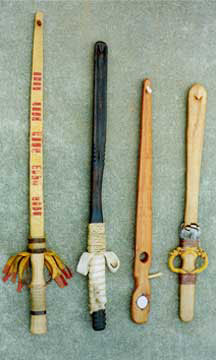
Hand thrown projectiles
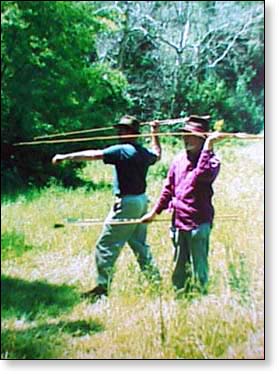 The atlatl
and dart dates back over 40,000 years. As man evolved from the
close range interaction of thrusting spears, to a need for long
range weapons to be used against faster and smaller game, the
atlatl was a natural solution. The atlatl, in many versions, had
almost worldwide distribution, and many illustrations are presented
of the variety of designs, materials and modifications employed
in the various geographical areas that it is found. The other
important part of the system was a flexible dart or projectile
that was either hafted with a point or incorporated a detachable
foreshaft.
The atlatl
and dart dates back over 40,000 years. As man evolved from the
close range interaction of thrusting spears, to a need for long
range weapons to be used against faster and smaller game, the
atlatl was a natural solution. The atlatl, in many versions, had
almost worldwide distribution, and many illustrations are presented
of the variety of designs, materials and modifications employed
in the various geographical areas that it is found. The other
important part of the system was a flexible dart or projectile
that was either hafted with a point or incorporated a detachable
foreshaft.
Since there are different types of atlatl, we will concentrate
on making the style that uses leather finger loops. We will also
create a flexible dart out of bamboo that will have a detachable
fire-hardened, wooden tip.
Seasonal Bounties
Useful and edible plants in California
The availability of plants and their use is governed
greatly with the seasons. Certain plants found during the Fall
may have matured and become too bitter to eat, while the tender
leaves and shoots of the same plant are edible during the Spring.
The properties of plants differ depending on the seasons and conditions
they are gathered in.
The class will consist of a hike and lecture, while
discussing the aboriginal and modern uses of different species
of plants found in California. We will walk along a creek in the
area and also visit local, wilderness locations to look at the
flora and discuss their uses.
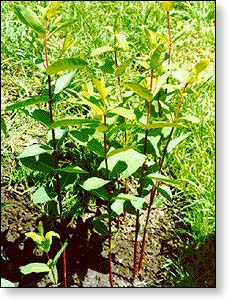 |
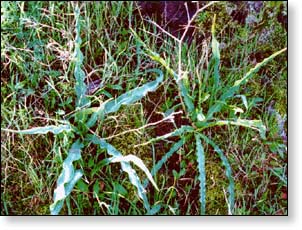 |
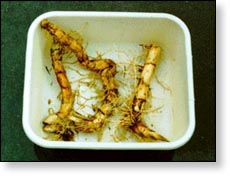 |
Bone tools and adhesives/glue
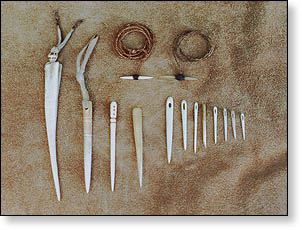
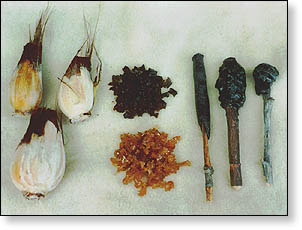
The hunter-gatherer of old had various materials
available for creating simple and essential tools. Bone was one
of the raw resources that was used to create harpoon and knife
blades, pendants, needles, projectile points, fish-hook barbs
and numerous other items. Whether they hunted an animal or simply
made use of "found" sources, bone provided an ideal
material for shaping into the necessary tools of everyday, primitive
living.
The class will consist of a lecture on specific bone
characteristics and capabilities for fashioning tools. We will
make needles, fish gorges and an awl from beef bone.
There will also be a discussion/demonstration on how
to create adhesives and glue (pine pitch sticks, soaproot adhesive
and hide/fish glue).
Forming a Vessel From Nature's
Greenery
Basket making
Archeological studies indicate that basket making
is the oldest craft. People in every early civilization needed
to carry home nuts, berries, herbs and meat from their foraging
and hunting expeditions. Food needed something to gather it in,
something in which to prepare it, something to cook it in, something
to store it in . . . hence, baskets. Expediently, nature has provided
each habitable region in the world with plants that can be woven
into baskets to fill that need.
Despite centuries of civilization, invention and progress,
a basket still cannot be made by machine. In the workshop, we
will create a basket that is either twined or coiled. You will
have the choice of doing a twined tule basket or a coiled grass
basket.
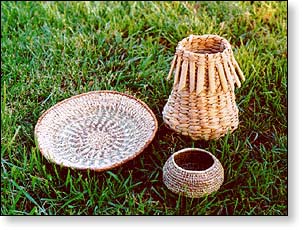
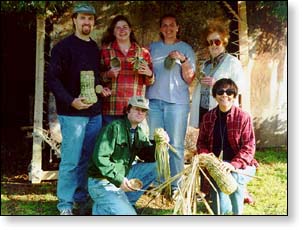
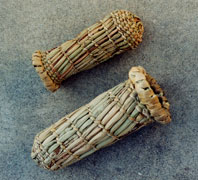
© KAHIKO Arts 2017
No part, content, graphic, illustration or photo from this
webpage may be copied, transferred or reproduced without express written permission
from KAHIKO
Arts. Contact Dino Labiste at KahikoArts@yahoo.com.